It is really interesting how watches and the stars have been forever linked since their inception, finding longitude, observatory trials, and of course the Space Race.
More interesting is how, despite one watch having our collective space imagination held hostage, there were, and still are, many watches that have been to space, and are being used up there.
But also on how some watches can perfectly represent the different eras of space exploration, either by their use in a specific program, or by the similarities it can bear.
In this article, I’m gonna try and assign a watch identity, ideally with watches that have been to space, to the different stages the exploration of the final frontier has taken, each assignee was chosen for either being a full representative of their respective era or just having the right stuff.
In part 1 we will explore the humble beginnings of manned space flights, without further ado, lift off.
Initial Soviet milestones - Fortis Fortissimo
Without the Soviets we wouldn’t be on the moon, that’s a fact, this is so true that, as far as I know, every astronaut who has gone to space, signs a special book at Yuri Gagarin's house in Russia to pay respects to him, regardless of race, nationality or gender.
(At least before 2022)
Without Sputnik, Laika, Gagarin, Leonov, Kurolev, or Tereshkova, we wouldn’t be up there today.
The watch that could summarize this specific era of space exploration is the Fortis Fortissimo, the parallels are obvious, Fortis was one of the first brands to offer a proper automatic caliber thanks to John Harwood, yes in a very rudimentary manner, but just like Gagarins Vostok 1 capsule, you had to start somewhere.
Other innovations had to come from this seminal one, mind you Fortis also offered their Fortissimo models with shockproof, as well as waterproof case systems to the mass market, even before Rolex.
Hence why I compare the early Soviet space program, without those innovations the watch industry as we know it wouldn’t exist.
Plus, Fortis being the official Cosmonauts watch to this day is an appropriate cherry on top for this precise comparison.
Mercury - Omega x Swatch Moonswatch
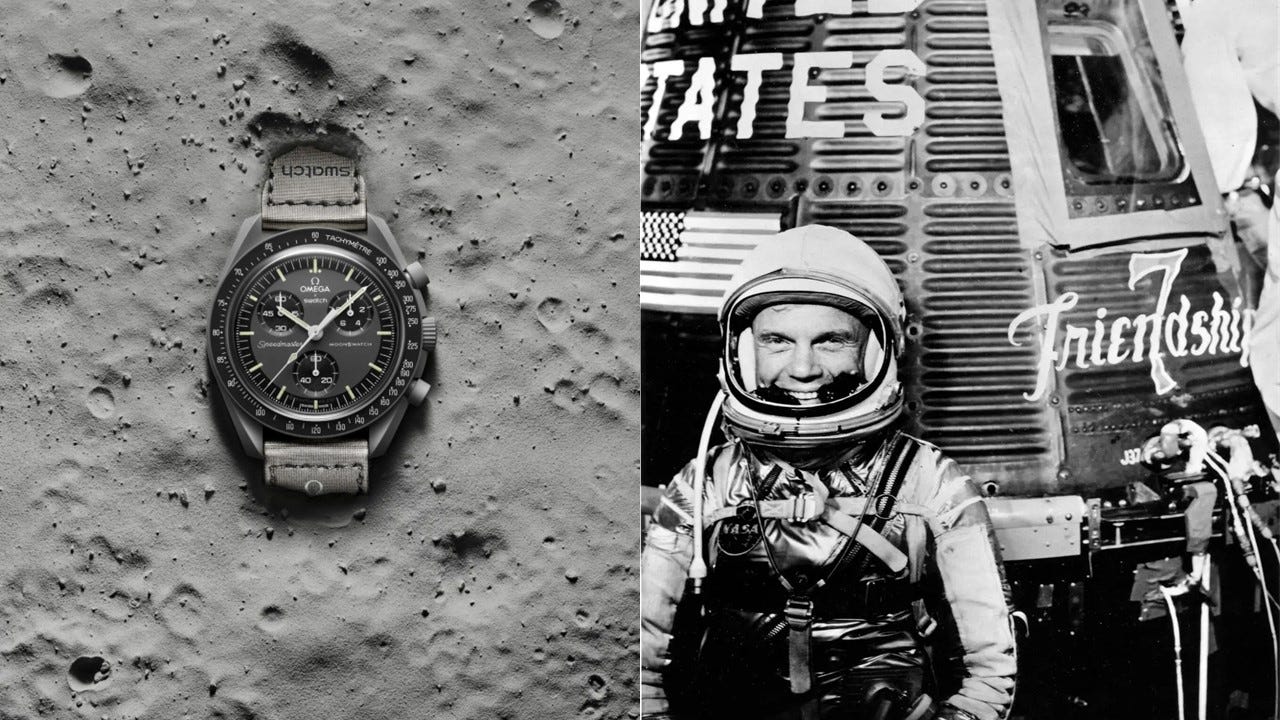
Now, let me be clear, the Moonswatch, as far as we know, has never been officially to space, but everything about it is fairly similar to what the Mercury program was.
Yes, Mercury was a momentous occasion for space travel, specifically the space race, as it was the true starting gun, but it was fairly primitive compared to what the other guys had, and what came in the future.
Without the advances of Mercury, which was successful in its mission objective of crewed orbital flight several times while also learning the effects of reduced gravity on living and sentient beings, we wouldn’t have future American endeavors in space.
We could argue the Moonswatch is that a fun and momentous release that is a bit crude in its execution, with a bunch of issues their creators don’t seem to want to acknowledge even several years in, yes it gives many the first taste of a Speedy, it is fun to wear but is in a package that leaves a lot to be desired.
Thus making its comparison to Mercury apt, at least superficially.
Gemini - Bulova Lunar Pilot
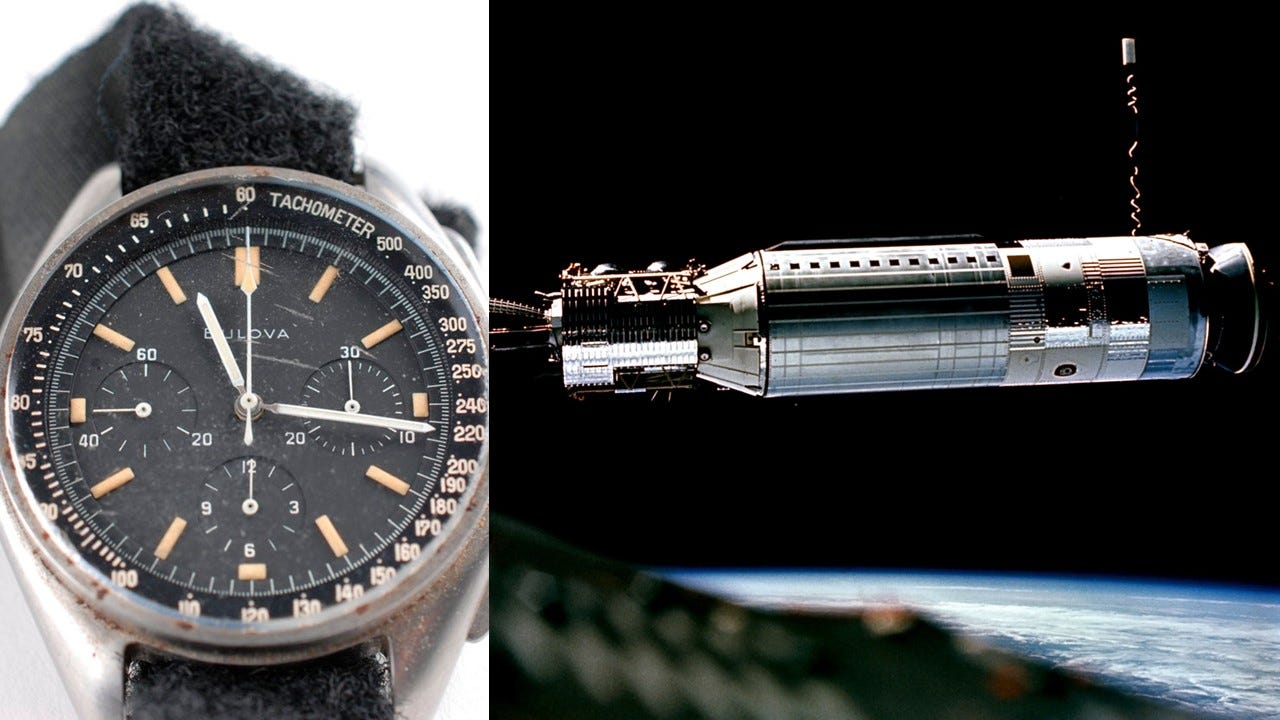
If you wanted to go to the moon you needed the Gemini program, there is no other way around it.
The objectives of the program included two key aspects for the success of the moon mission, extravehicular activity (EVA), space rendezvous and docking.
Without the ability to fabricate and properly test pressurized suits for EVA activity, the US astronauts could’ve presented problems similar to the ones Alexei Leonov presented, with the suit essentially expanding and hindering the ability to enter the capsule.
Equally, the necessity for rendezvous and docking in space was key to bringing many astronauts back home safely, as it was a key feature of the Columbia and Eagle modules in later Apollo missions.
A watch that describes this important yet often overlooked step, is the Bulova Lunar Pilot, as this Bulova reference was forgotten, or at the very least it wasn’t paid enough attention to until recently thanks to David Scott (who was Neil Armstrong's teammate in Gemini VIII which achieved the first space docking) unearthing his personal prototype from Apollo XV, giving this forgotten moonwatch a second life.
Plus, just like the Gemini Program the Lunar Pilot is often known more by the nerds of each discipline, rather than the general public, thus another mark in favor of their association.
Apollo -Omega Speedmaster
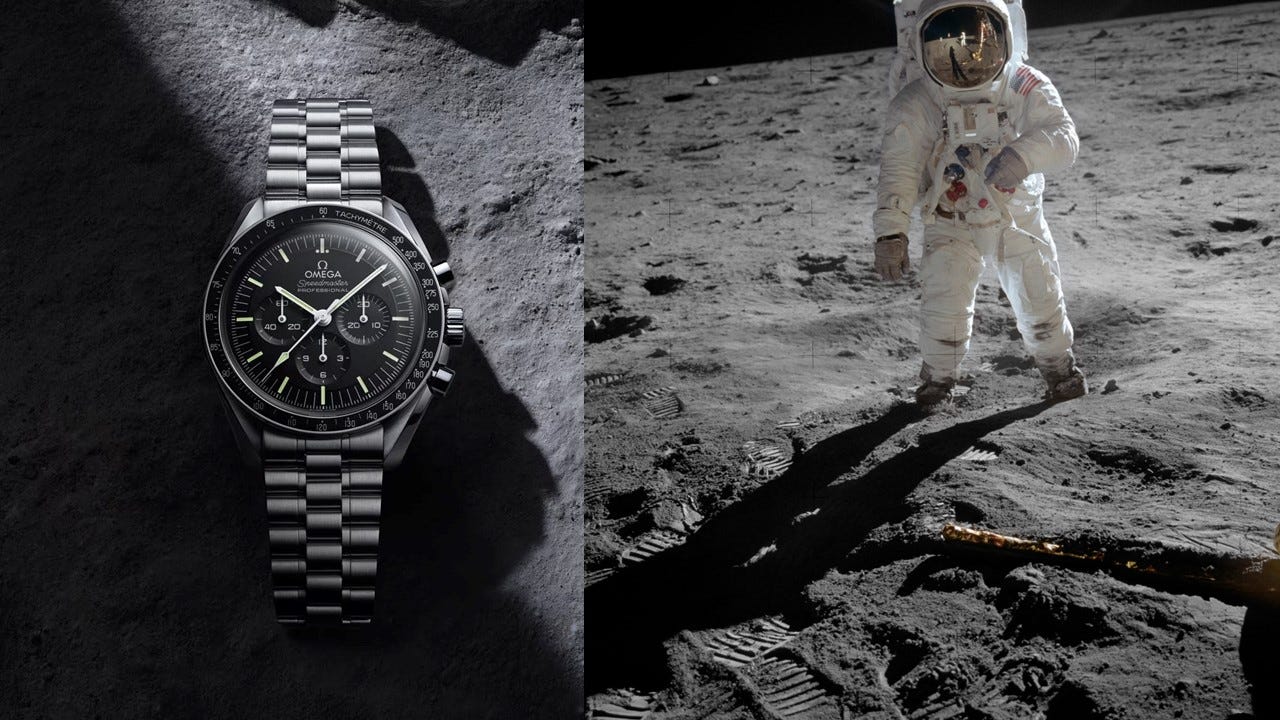
Who else could’ve gotten this space (pun partially intended), if not the moon watch.
Apollo has a hold in our collective imagination as a species because it shows us what we can achieve when we decide to do the hard thing, to go further, to dream.
The race with the Soviets, the embarrassments of Explorer, the initial tests of Mercury, the success of Gemini, and the tragedy of Apollo I, all led to the moon landing.
And not only one but several successful missions that sadly had to stop due to budgeting, and shifting priorities on the world stage, as well as public disinterest.
Yet its legacy remains, and is there to inspire us each day.
The comparison here is obvious Omega knew how to do the marketing, although it wasn’t hard given its achievements, and now there’s only one space watch on the public collective.
Mind you not without reason, as the Speedmaster was the only one of the sent samples to survive all the tests and work perfectly, or at least in a satisfactory manner according to NASA, so its stripes weren’t earned out of luck alone, add to this the fact that the Speedy was crucial in the ill-fated Apollo 13 mission, thus enhancing the fame of this timepiece grow, especially when immortalized on film.
—
This does not end here, join me next week for part 2, when we get funky and weird with the pieces that represent the newest technologies in space flight, from the Shuttle to the ISS.
Until then Godspeed!
As always…

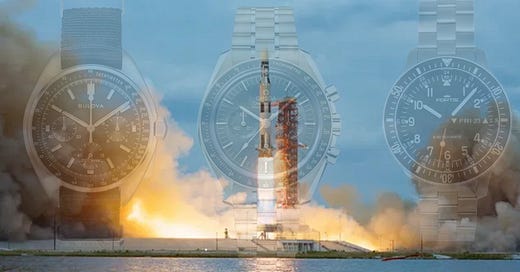



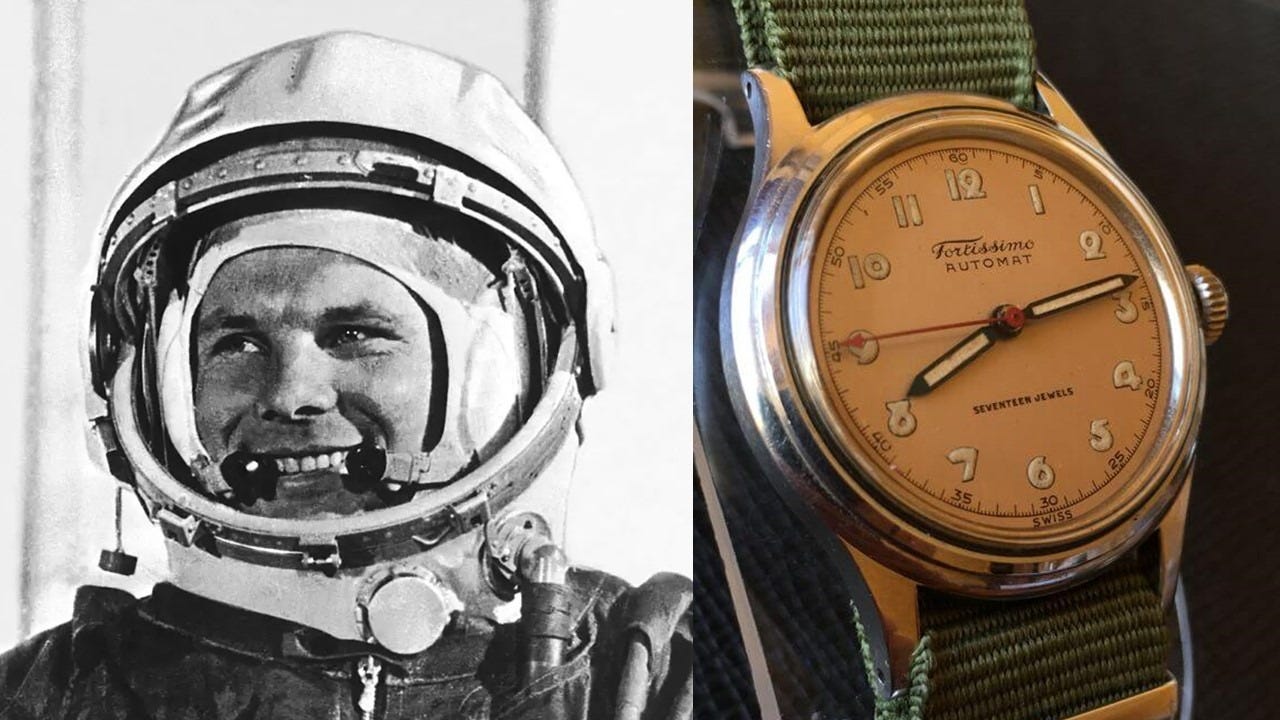
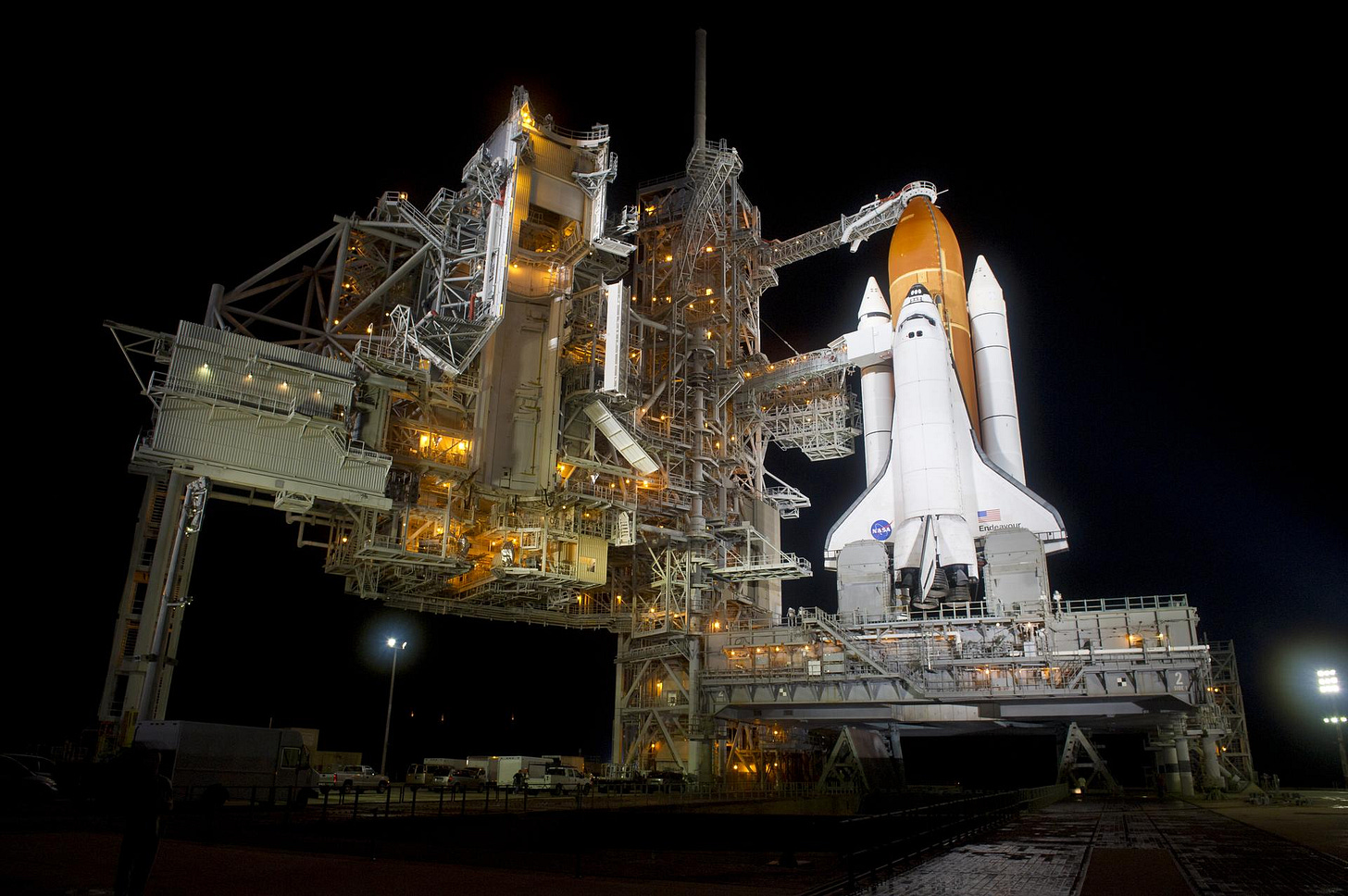
Guys I just realized that in the Project Mercury photo is John Glenn, not Alan Shepard, I'm sorry for this mistake